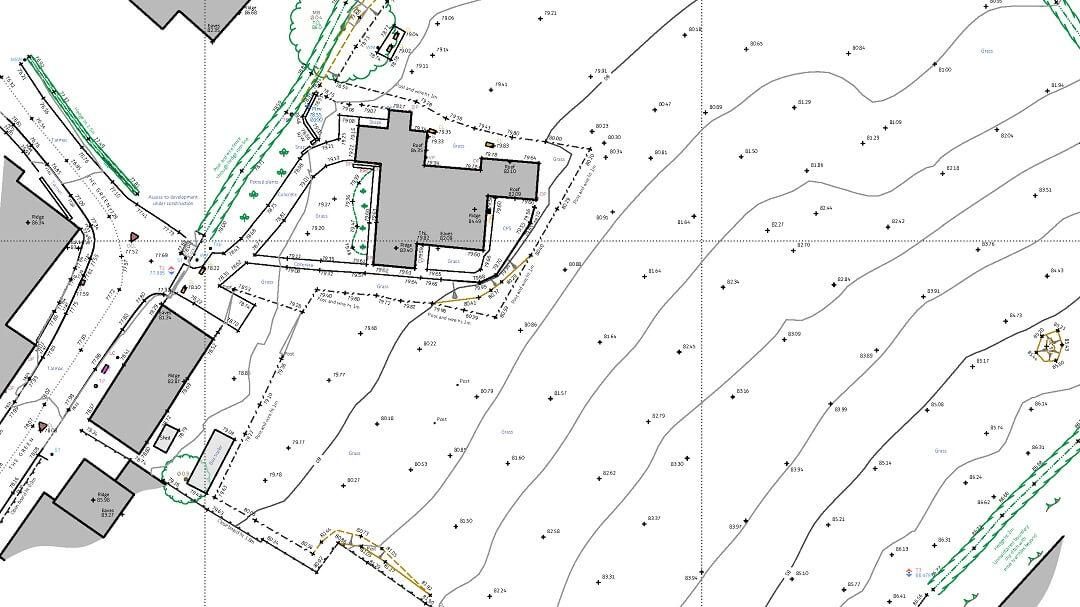Engineering Surveys: Understanding Their Role in Safe and Efficient Design
Necessary Devices and Techniques in Laying Out Engineering
The self-control of setting out engineering counts greatly on a suite of crucial devices and strategies that underpin the accuracy and effectiveness of job execution. What ramifications does this hold for future engineering techniques?
The Relevance of Accurate Dimensions

The importance of exact measurements prolongs past simple conformity; they are essential to the total effectiveness of design processes. Mistakes can bring about material waste, project hold-ups, and raised labor costs, eventually affecting the job's lower line. Additionally, precise dimensions improve the quality of the end product, guaranteeing that it executes as meant and satisfies the assumptions of stakeholders - setting out engineering.
Additionally, the significance of accurate dimensions is obvious in different engineering self-controls, including civil, mechanical, and electric engineering. Thus, fostering a society that prioritizes accuracy is essential for the future of design.
Crucial Devices for Establishing Out
Laying out, a critical stage in the design and building and construction process, depends greatly on specific devices that ensure precise place and positioning of structures. Among these tools, the surveyor's level stands out, providing specific horizontal measurements vital for establishing reference factors. This tool allows engineers to determine altitude changes and keep uniformity throughout the task website.
The overall station is an additional vital tool, integrating digital distance dimension with angular measurement capabilities. This modern technology enhances performance and precision in catching spatial information, enabling effective site design and preparation.
Additionally, making use of measuring tapes and marking tools, such as chalk lines or risks, is basic for momentarily marking boundaries and crucial points on the site. These fundamental devices, though easy, are vital for guaranteeing clear interaction among the building and construction group concerning job specifications.
Last but not least, GPS technology has obtained traction in laying out processes, offering real-time positioning data and considerably enhancing accuracy over standard techniques. Collectively, these vital devices create the foundation of reliable laying out practices, eventually contributing to the successful implementation of engineering and construction projects.
Advanced Surveying Methods
Advanced evaluating strategies play an essential function in enhancing the accuracy and efficiency of engineering tasks. These strategies incorporate a series of approaches that offer precise data for style and building. Standard techniques, such as leveling and triangulation, have actually progressed right into much more sophisticated techniques, consisting of Total Station studies and Global Navigating Satellite Solution (GNSS)
Total Terminal devices incorporate electronic theodolites with distance dimension capabilities, permitting land surveyors to gather precise location information with wonderful rate. This technology considerably lowers mistakes associated with hand-operated measurements and supplies real-time information processing. GNSS uses unmatched precision for large jobs by utilizing satellite signals to establish precise positioning, which is important for making sure and aligning structures compliance with style specifications.
Along with these devices, progressed techniques also integrate geospatial analysis and 3D modeling. These techniques make it possible for designers to imagine terrain and website problems more efficiently, promoting better decision-making during the planning stage. By using these innovative evaluating strategies, design tasks can attain greater precision in layout, reduce rework, and ultimately enhance overall project success.
Digital Innovation in Design
The assimilation of electronic modern technology has actually changed design practices, boosting both performance and precision throughout numerous disciplines. Tools such as Building Info Modeling (BIM) promote the visualization and monitoring of complex jobs, permitting designers to work together flawlessly and make educated choices. This modern technology enables the development of thorough 3D models, which can be analyzed for architectural honesty and performance before building starts.

The application of expert system and equipment discovering in engineering processes additionally enhances anticipating maintenance and optimization of resources. These modern technologies make it possible for the analysis of vast information sets, leading to far better forecasting and boosted task results. In general, digital technology is improving the engineering landscape, driving technology, and making sure that jobs are finished with greater performance and decreased risk. As the sector continues to progress, accepting these devices will be essential for future success.
Finest Practices for Application
When executing electronic technology in engineering, it is critical to establish a calculated strategy that lines up with job objectives and organizational abilities. A detailed evaluation of existing process and technology framework is necessary to recognize voids and possibilities for enhancement. Involving stakeholders early while doing so cultivates cooperation and makes sure that the technology fulfills individual demands.

Job supervisors ought to embrace an iterative execution strategy, enabling for changes based upon real-time comments and performance evaluations. This nimble approach not just alleviates threats yet likewise advertises constant renovation by incorporating lessons found out.
Conclusion
To conclude, the assimilation of crucial devices and progressed strategies in More Info laying out design is important for ensuring accuracy in dimensions and successful job implementation. Utilizing instruments such as surveyor's degrees, total terminals, and GPS modern technology, alongside modern checking methods, improves accuracy and decreases the probability of mistakes. Embracing ideal practices in execution additionally optimizes these procedures, ultimately promoting enhanced project end results in the design and building markets.
The discipline of establishing out engineering depends greatly on a collection of necessary devices and methods that underpin the precision and efficiency of project implementation.In addition, the significance of accurate measurements is noticeable in various design techniques, including civil, mechanical, and electric engineering. By utilizing these innovative evaluating techniques, design jobs can achieve better precision in format, minimize rework, and ultimately boost overall task success.
In general, electronic innovation is improving the engineering landscape, driving innovation, and making certain that jobs are finished with you could try these out greater performance and decreased threat (setting out engineering).In final thought, the assimilation of necessary tools and progressed strategies in setting out design is vital for making certain precision in dimensions and successful task execution